Last week, we had a gorgeous cougar feeding on an elk carcus on the Eastern side of the Elk Refuge. It made for some great photos! Using a scope, we were able to catch this nice one in the late afternoon.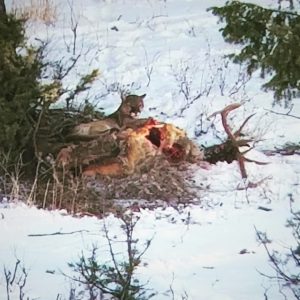

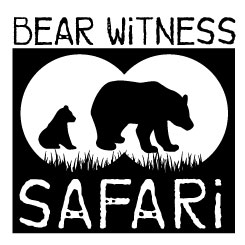

Last week, we had a gorgeous cougar feeding on an elk carcus on the Eastern side of the Elk Refuge. It made for some great photos! Using a scope, we were able to catch this nice one in the late afternoon.


Wolves are a hot topic in the Great Yellowstone Ecosystem since they were reintroduced in the mid-90s. Nowadays, they are a thriving species that have brought order and balance to this ecosystem, allowing other species to thrive as a result.
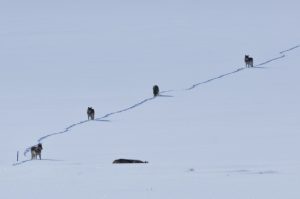
There are several packs of wolves in the surrounding area, about 8 packs surrounding Jackson Hole specifically. Wolves live in packs of about 6 to 10 animals depending on the types of food sources available. If they become too large, they will often split up as they become unstable and their resources cannot sustain them.
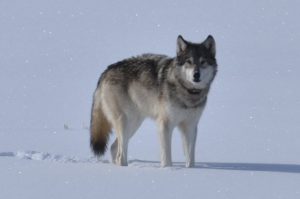
We currently have one pack following a herd of bison (American buffalo) that live up near Elk Ranch Flats in Grand Teton National Park. This pack o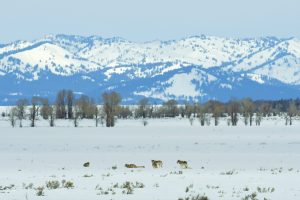 f wolves are following the bison as a food source and will continue to do as long as the pickings are easy. They are likely from either the Lower Slide Lake, Phantom Springs, or Lower Gros Ventre packs.
f wolves are following the bison as a food source and will continue to do as long as the pickings are easy. They are likely from either the Lower Slide Lake, Phantom Springs, or Lower Gros Ventre packs.
As this is a relatively low snowpack year for Jackson Hole thus far, we are seeing a lot more wildlife out in the open sagebrush where they can still access food. This is also making it easy for wolves to hunt. Elk are still finding their way to the Elk Refuge and bison are out in easy access for these wolves. Furthermore, the main source of food for wolves has moved out of the mountains and the wolves have to follow.

Since wolves prefer to be private, reclusive animals, the opportunity to see them in action should not be missed. The Elk Ranch Flats offers a great opportunity to views these predators in the safety of a car while still getting the opportunity of a lifetime. Winter is by far the best time to catch a wolf in action with your camera, especially since they stand out from the winter snow. If you do not want to miss this opportunity, we can help. Schedule a tour with us and we will do our best to find you a memory that will last a lifetime.
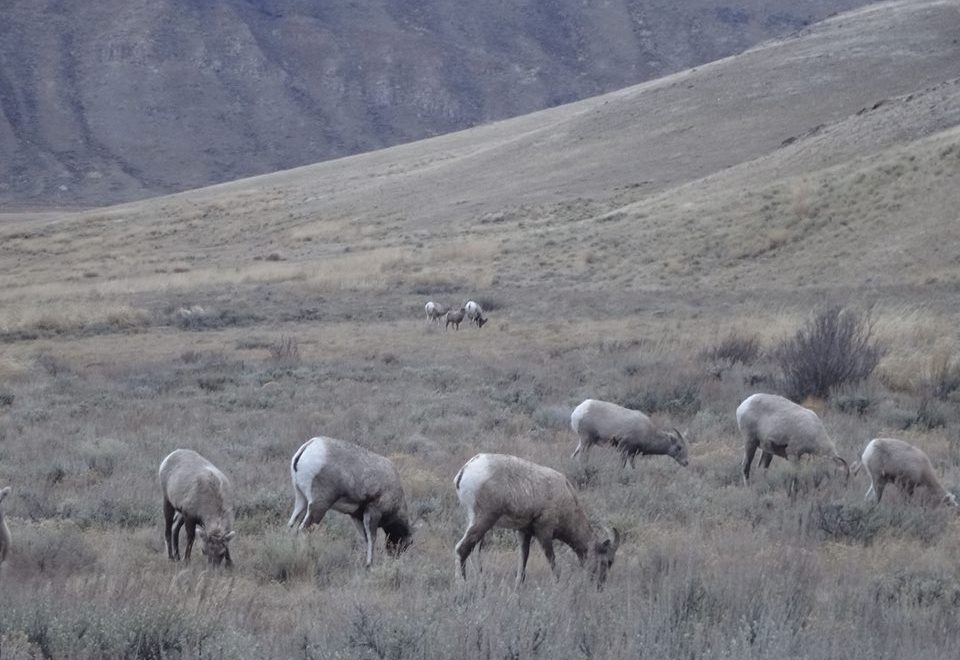
Bighorn sheep have made their way to the Elk Refuge in Jackson Hole! Do not miss this opportunity to see these majestic yet somewhat skittish animals in person.
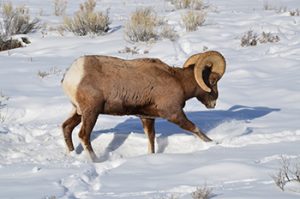
Bighorn Sheep get their names from the huge racks of horns that sit on the top of the males heads. They get to be about 30 inches long and curve back towards the head of the males. Ewe’s horns are shorter and not quite as curved. The animal itself is about 3 1/2 feet tall and weigh about 140-300lbs.
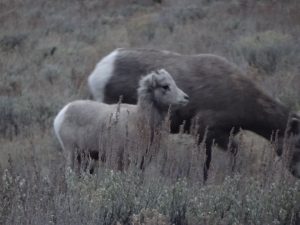
Bighorn sheep generally live in the high mountains during the summer and come down to the valleys during the winter. They live in groups of about 5 to 15 lambs, ewes, and two-year-olds. The men live in much smaller groups. The group that is on the Elk Refuge right now is about 20 different animals, including a few cute lambs.
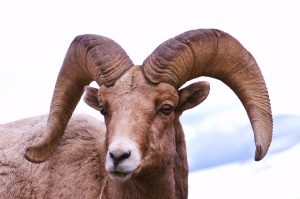
Rocky Mountain Big Horn
This is their mating season and the males have definitely joined this group to woo the females. A little butting behavior happens when rams are competing for the female’s attention, resulting in sounds of cracking foreheads. This is a great battle to watch, so be sure to get out to the Elk Refuge to see it.
Bighorn Sheep have a winter diet that includes sage (quite prevalent on the Elk Refuge) but they also will partake in the grasses provided by the Boy Scouts. They will stay on the Elk Refuge through most of the winter and will leave again in the Spring when the sage and grasses in the highlands start to grow.
If you are planning to come to Jackson Hole and would like to see Bighorn Sheep as well as other wildlife in the area, Bear Witness Safari offers several guided tours to these animals. Just give us a call and we will introduce you to the wonderful wild place that is Jackson Hole!
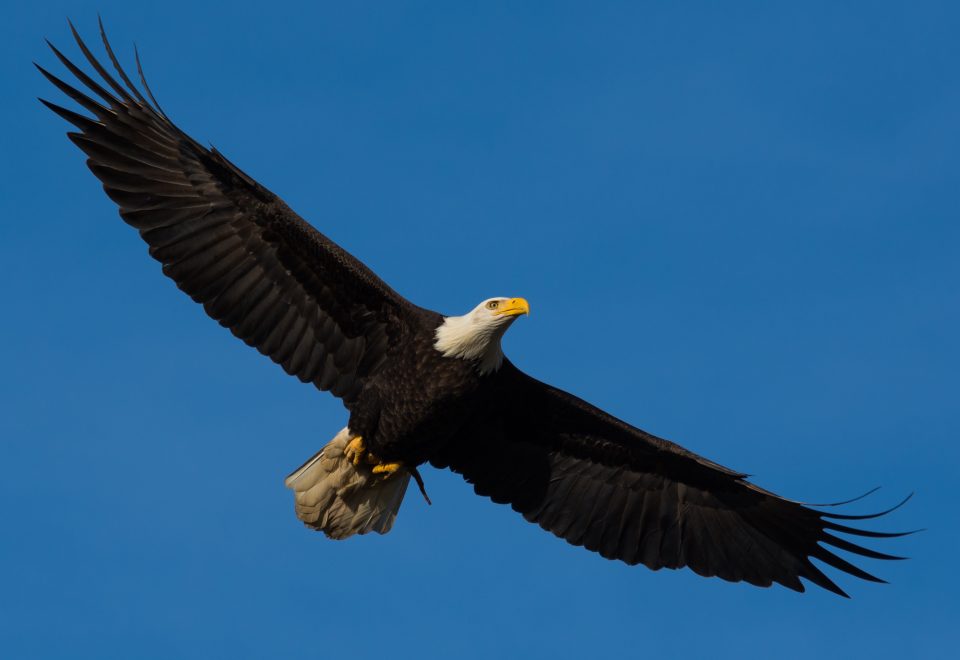
Jackson Hole is home to a wide variety of raptors, including the Bald Eagle, our national symbol. These majestic birds can be seen soaring throughout the skies, enhancing any photo opportunity with a sense of awe.
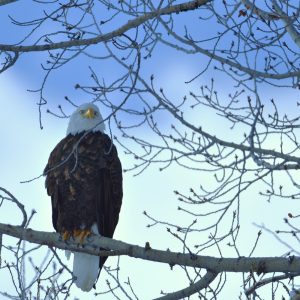
Bald Eagle
This beautiful creatures are often seen along the Snake River, quietly perched on a large branch studying you as you go by. Just as quickly as you spot one, they are diving into the river with grace and elegance, perfectly snatching that trout and flying off with their prize. If you are lucky, you will catch a glimpse of a juvenile bald eagle and be able to differentiate it from other birds of prey. In fact, we often get asked how to tell what a bald eagle’s age is, especially since they look like many other birds when they are juveniles.
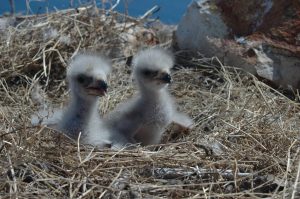 In general, it takes about 5 years for them to develop their white “bald” heads. Juvenile bald eagles will have brown heads, a paler brown body and white plumage underneath their wings in the first year of their life. As they approach their second year, their wings will continue to stay white and their body will also become white, although their chest and head will remain dark. In their third year, their wings become darker, their bodies become darker with specs of white and their head gradually turns whiter.
In general, it takes about 5 years for them to develop their white “bald” heads. Juvenile bald eagles will have brown heads, a paler brown body and white plumage underneath their wings in the first year of their life. As they approach their second year, their wings will continue to stay white and their body will also become white, although their chest and head will remain dark. In their third year, their wings become darker, their bodies become darker with specs of white and their head gradually turns whiter.
After 5 years, it is challenging to determine how old a bald eagle is by sight. At 5 years old, they become adults and are able to breed, finding lifelong partners and raising their old youth.
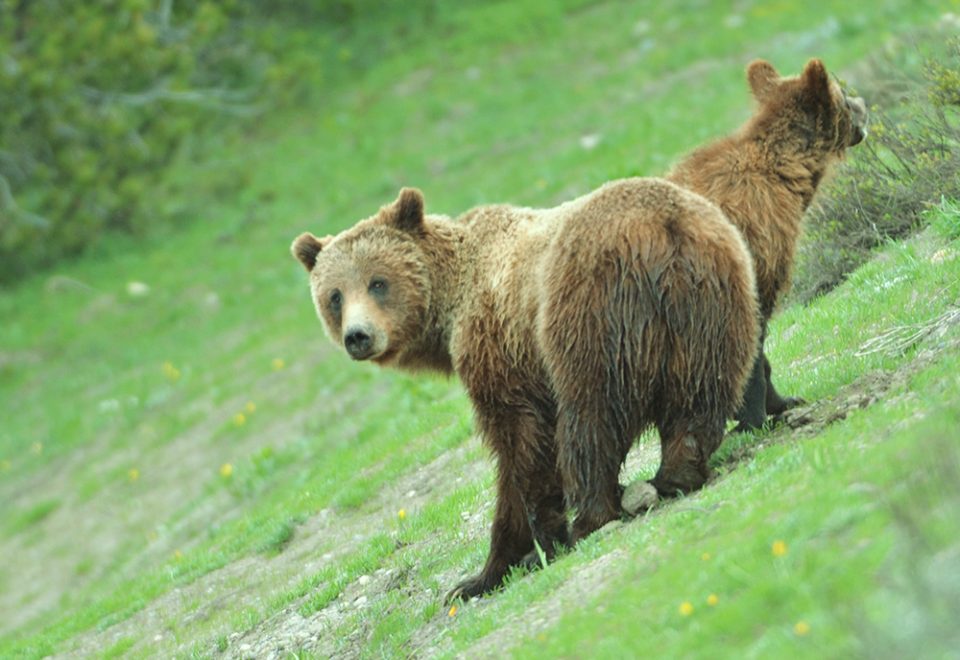
One of the more exciting animals to see in Yellowstone and Grand Teton National Park is a grizzly bear! These large, cinnamon brown bears most recognizable by the large hump between their shoulders are thrilling, amazing, and are best seen from the safety of a car!
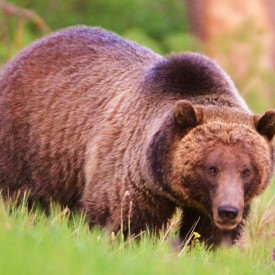 But where can I see a grizzly bear?
But where can I see a grizzly bear?
And when?
Well, if you haven’t guessed it by the timing of this article, it’s RIGHT NOW! Grizzlies have just emerged from their dens in search of food with their cubs. In fact, Grizzly 610 has already encouraged her two two-year-old cubs to move out and is currently being wooed by some good looking gents, Brutus and Bruno.
After spending the cold winter in a favorite den resting, bears start to get hungry around the end of March and beginning of April. They will eat just about anything, including frozen remains and last year’s vegetation.
When they come out of their den, of course, depends on whether they have cubs in tow. Mothers who have a couple of little ones might take longer than their male friends. As of right now, the bears known as Grizzly 399 and Blondie have not yet been spotted with their COY (cubs of the year). Everyone is eager to find out how many cubs each will have!
In general, you can spot grizzlies in the area around Jackson Lake Lodge (we can’t give away all of our secrets!) and in the Hayden and Lamar valleys of Yellowstone. We can tell you that just yesterday, a big male Grizzly was sighted in the John D. Rockefeller Jr. Memorial Parkway swimming across the Snake River.
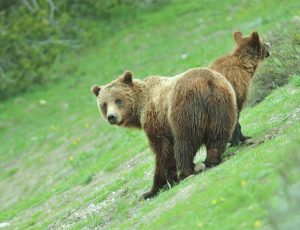
Grizzly #399& Cub
At this time of year, it is especially important to be BEAR AWARE! Carry bear spray during any activity as you never know where they are going to show up!
307-699-8507